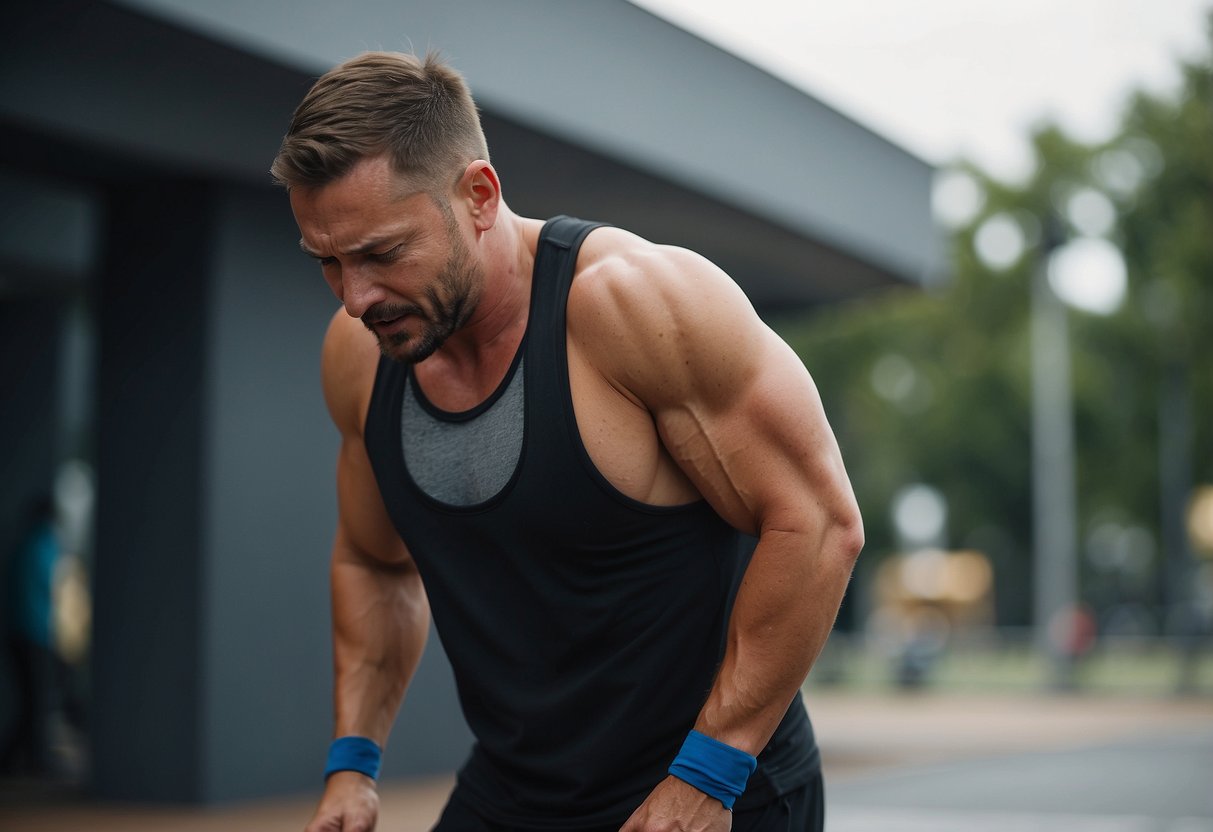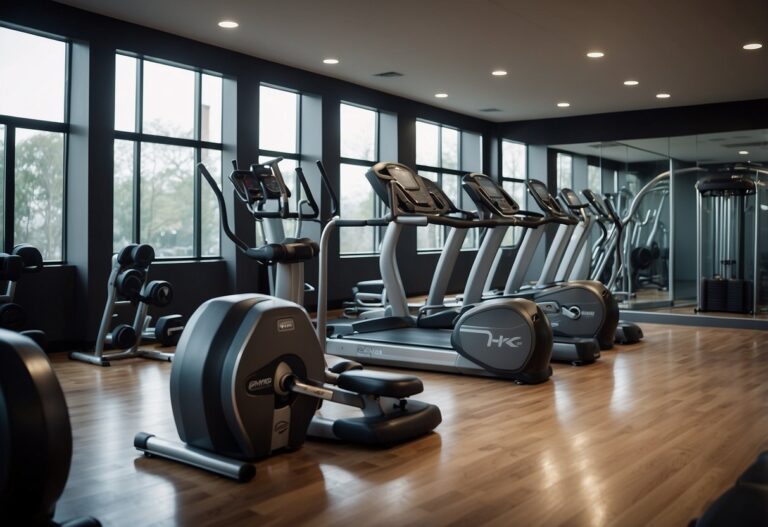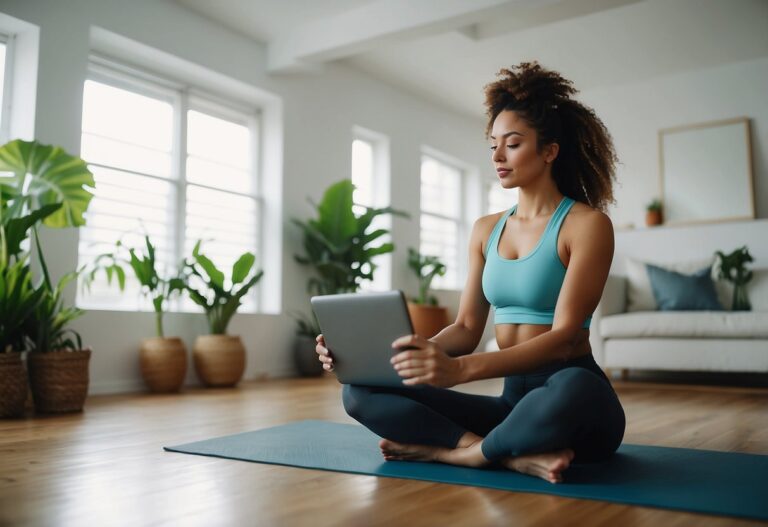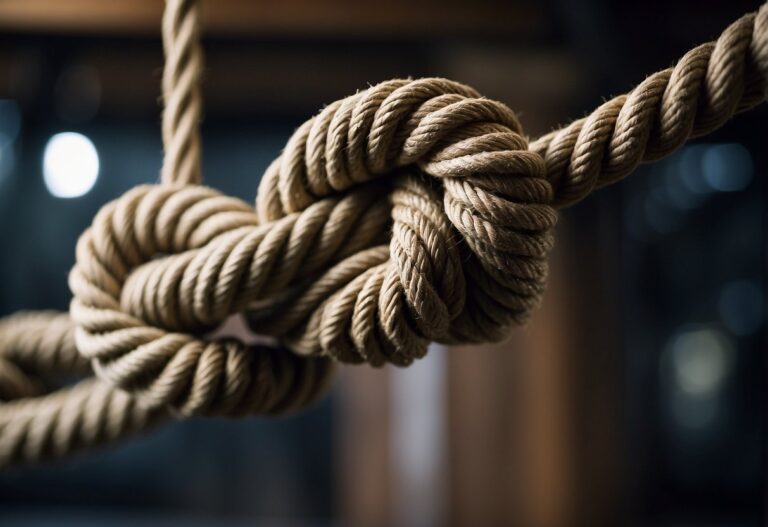Experiencing lower back pain after a leg workout can be a common issue that many fitness enthusiasts face. Whether you’re new to exercise or a seasoned gym-goer, understanding how to manage and prevent this discomfort is crucial. Knowing the right techniques and exercises can make a significant difference in your overall workout experience and long-term health.

It’s important to pay attention to the signals your body sends after a workout. Ignoring lower back pain can lead to more severe injuries over time. By incorporating specific strategies and exercises, you can alleviate the pain and improve your performance. These tips can help ensure that your leg day remains effective and pain-free.
Warm-up properly before starting
Warm up thoroughly before any leg workout to prevent lower back pain. A good warm-up increases blood flow to your muscles and makes them more flexible.
Try a dynamic back stretch that involves lunges and torso rotation. This can help loosen your back.
Next, incorporate exercises like marching on the spot to get your heart rate up and your muscles ready.
These warm-up exercises prepare your body, helping to reduce the risk of injury and improve your overall workout performance.
Incorporate dynamic stretches
Dynamic stretches are great for preparing your lower back before a leg workout. These stretches involve movements that mimic the exercises you’re about to do, helping to warm up your muscles and improve flexibility.
Try the Toe Touch Overhead Reach. Stand tall, then bend forward to touch your toes while keeping your knees straight. Slowly return to standing and reach your arms overhead.
Another effective stretch is Lumbar Rotations. Lie on your back with knees bent and feet flat. Gently rotate your knees to one side, hold for a moment, then switch sides.
Incorporating these stretches can help relieve lower back pain and prevent injury during your workouts. Consider adding these to your routine to keep your lower back strong and flexible.
Focus on Form During Exercises
Improving your form can reduce lower back pain after leg workouts. To start, ensure your feet are firmly planted on the ground, shoulder-width apart. This position gives you a stable base to work from.
Always maintain a neutral spine. This means keeping your back flat against the seat during exercises like the leg press. A neutral spine helps prevent unnecessary stress on your lower back.
When doing squats, keep your chest up and back straight. Don’t let your knees go past your toes. This alignment prevents strain on your lower back. Think about pushing through your heels.
Use mirrors if available. They can help you check your posture and form. It’s much easier to correct mistakes if you can see them.
Besides, don’t rush through your exercises. Controlled movements are safer and more effective. Focus on quality, not speed.
Strengthen your core muscles
Strengthening your core muscles is crucial for supporting your lower back, especially after leg workouts. When your core is strong, it helps stabilise your spine and reduces the risk of injury.
You can try exercises like the side plank. This exercise targets the sides of your core and low back, which is beneficial for overall stability during workouts.
Another effective exercise is the good morning. This move not only strengthens your lower back but also engages your hamstring muscles, helping to prevent injuries. It’s a great substitute for exercises like the Romanian deadlift.
For a more focused core workout, try lying on your back with your legs raised in a tabletop position. Contract your abs to press your lower back into the floor and crunch up just a few inches. This helps build your core strength and supports your lower back.
Use a foam roller post-workout
Using a foam roller after your leg workout can help relieve lower back pain. Foam rolling can ease muscle tightness and improve blood flow. This can reduce soreness and increase your range of motion.
Place the foam roller under your lower back. Lift your hips and slowly move your body to massage the muscles. Focus on any tender spots and hold for about 20 to 30 seconds.
By regularly incorporating foam rolling into your routine, you can help prevent future pain and discomfort. It’s a simple tool, but it can make a big difference in how you feel after a workout.
Incorporate Lower Back Stretches
Stretching your lower back is a great way to prevent pain after a leg workout. Simple stretches can make a big difference.
Knee-to-Chest Stretch
Lie flat on your back. Bend your knees and bring them to your chest. Hold your shins with your arms and gently pull. This stretch targets the muscles in your lower back.
Bird Dog Exercise
Start on all fours. Extend one arm and the opposite leg. Hold for a few seconds, then switch. This improves stability and strengthens your back.
Hip Hinge Stretch
Stand with feet hip-width apart. Bend at your hips, keeping your back straight. Lower your chest towards the floor. This stretch helps your lower back and hamstrings.
Incorporate these stretches into your routine to keep your lower back healthy and strong.
Avoid Overtraining
Pushing your body too hard can lead to injuries, especially in your lower back. Trying to do too much without enough rest can strain your muscles and leave you feeling sore.
If you notice pain after your leg workouts, it might be a sign that you need to back off a bit. Resting allows your muscles to recover and become stronger.
Make sure to incorporate rest days into your routine. Your body needs time to heal and build muscle. If you feel pain, it’s essential to listen to your body and take a break.
Changing up your workouts can also help. Doing the same exercises every day can wear out specific muscles. Mix things up to avoid overloading your lower back.
Lastly, always ensure you’re using proper form. Bad technique can lead to overtraining injuries. Watch videos or ask a trainer for tips if you’re unsure about your form.
By giving your body the rest it needs, you can prevent lower back pain and enjoy your workouts more.
Stay Hydrated
It’s easy to forget to drink enough water, but staying hydrated is crucial for preventing lower back pain after a leg workout.
When your muscles are well-hydrated, they perform better and recover faster. This reduces the risk of strain and soreness in your lower back.
Try carrying a water bottle with you to remind yourself to drink regularly, especially during and after your workout.
Your body needs water to maintain flexibility and elasticity in muscles and joints. Without it, your muscles can become stiff and more prone to injuries.
Consider drinking water before, during, and after your leg workouts to keep everything running smoothly. This might be especially important if you sweat a lot during exercise.
Finally, pay attention to your body’s signals. If you’re feeling thirsty or fatigued, those can be signs that you need to hydrate. Keeping yourself well-hydrated can make a big difference in how your body feels and performs.
Consider Using a Weight Belt
Using a weight belt during leg workouts can offer extra support for your lower back. This is especially true when performing exercises like squats or deadlifts.
A weight belt can help stabilise your core and reduce the strain on your lower back muscles. This might help prevent injuries.
Before using a weight belt, think about how it can fit into your routine. It’s important not to rely on it too much. Strengthening your core muscles naturally is still crucial.
Try using the belt during your heaviest lifts but not for your lighter sets. This approach balances support with natural strength-building.
Do you currently use a weight belt in your workouts? If not, could it make your leg days safer and more effective?
Pay attention to your posture
Maintaining proper posture during your leg workout is crucial. When doing exercises like the leg press, ensure your feet are firmly planted on the platform and shoulder-width apart. This helps distribute the weight evenly and reduces stress on your lower back.
Always keep your spine in a neutral position. Avoid rounding your back. Keep your back flat against the seat to protect your spine. This can help minimise the risk of injury and discomfort.
Consider using a mirror to monitor your form. Seeing your posture as you move can help you make corrections on the spot. This visual feedback can be incredibly helpful in preventing lower back pain.
Engage your core muscles during each exercise. Strong core muscles support your lower back and improve overall stability. This simple action can make a big difference in maintaining proper form throughout your workout.
Understanding Lower Back Pain
Lower back pain during or after a leg workout can be puzzling. Key factors include workout intensity, specific movements, and muscle involvement.
Common Causes of Pain
One major cause is overtraining. When you push your body beyond its limits without proper rest, it can lead to muscle fatigue and strain. For instance, high-intensity workouts might cause inflammation and minor muscle tears.
Incorrect form during exercises like deadlifts and squats can also be a culprit. These exercises work your lower back extensively, and doing them improperly can result in stress and tightness.
Using weights that are too heavy adds unnecessary strain on your muscles, increasing the risk of pain.
If pain persists, it might be due to joint or nerve issues, such as numbness or tingling, which can indicate a more serious problem needing medical attention.
Anatomy of the Lower Back
The lower back consists of muscles, ligaments, and the lower spine. Muscles like the erector spinae help you maintain posture and lift heavy objects. Strain on these muscles can lead to pain, especially if they are overworked or misused.
Ligaments connect bones, providing stability but are prone to injury if overstretched or torn.
The lower spine includes the lumbar vertebrae, which support much of your body’s weight. Damage or stress to this area can cause significant pain, possibly radiating down your legs, indicating nerve involvement.
Understanding the structure and function of these components can help you recognise why pain occurs and how to prevent it. For example, strengthening these areas through targeted exercises and ensuring proper form can help mitigate unnecessary strain.
Preventative Measures
To avoid lower back pain after leg workouts, it is crucial to start with a proper warm-up and maintain the correct form during exercises. These steps can reduce the risk of strain and injury, allowing you to work out safely and effectively.
Proper Warm-Up Techniques
Warming up before a workout is essential to prepare your muscles and joints. Spend at least 5 to 10 minutes doing cardiovascular activities like jogging or brisk walking. This increases blood flow and raises your body temperature, making your muscles more flexible.
Incorporate dynamic stretches such as leg swings and lunges to further prepare your muscles. These movements help to engage the muscles you will be using during your leg workout and can prevent stiffness and injury.
A proper warm-up can also include specific exercises targeting your core and lower back. Planks and bridges are great for strengthening the muscles that support your back.
Correct Form and Posture
Maintaining correct form during exercises is critical for preventing lower back pain. When doing squats or deadlifts, ensure that your back stays neutral without rounding or arching excessively. Keep your feet shoulder-width apart and push through your heels.
Engage your core muscles throughout the workout to stabilize your spine. This helps distribute the weight evenly and reduces strain on your lower back. For added safety, consider using a mirror or asking for feedback from a workout buddy to check your form.
Also, avoid lifting weights that are too heavy. It’s better to start with lighter weights and gradually increase as your strength improves. This practice helps prevent overtraining and muscle fatigue, which can lead to back pain. Properly timing your breath with your lifts can also provide added stability and support.
Recovery Tips
When experiencing lower back pain after a leg workout, it’s crucial to focus on recovery. Doing effective stretching exercises and allowing for proper rest can help alleviate discomfort and prevent future injuries.
Effective Stretching Exercises
Stretching is vital for easing lower back pain. Begin with the cat-cow stretch. Start on all fours, arch your back upward (cat), then dip it downward (cow). This helps relieve tension in the spine.
Another helpful stretch is the child’s pose. Kneel on the floor, sit back on your heels, and stretch your arms forward. This opens up the lower back and promotes flexibility.
Stiff leg deadlifts without weights can also be beneficial. Begin carefully, focusing on the range of motion. Gradually incorporate light dumbbells to enhance the stretch. Remember to do each stretch slowly and hold for at least 20 seconds.
Rest and Recovery Time
Giving your body enough rest is just as essential as stretching. Avoid overtraining, which can strain your muscles and lead to inflammation. It’s important to integrate adequate recovery time between heavy workouts.
Use active recovery methods like light walking or cycling. These low-intensity activities encourage blood flow and muscle repair. Hydration is also key—ensure you drink plenty of fluids to help your muscles recover more efficiently. Aim to increase fluid intake around leg day.
Don’t ignore pain. If your back pain persists or worsens, it may be a sign of a more serious issue. Consulting a healthcare professional for further advice is crucial to ensure you’re not dealing with an injury that needs special attention.







